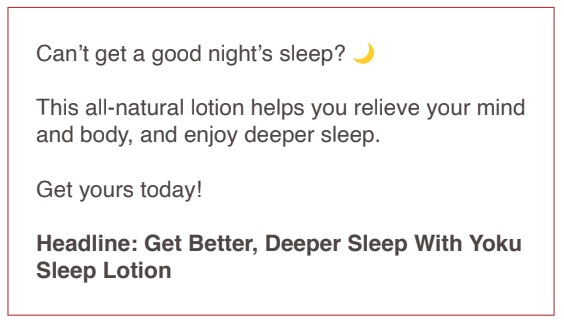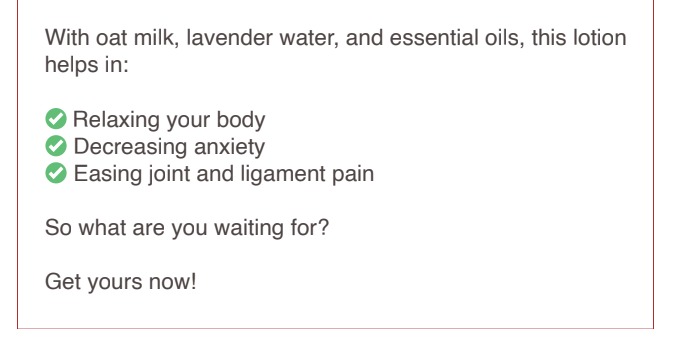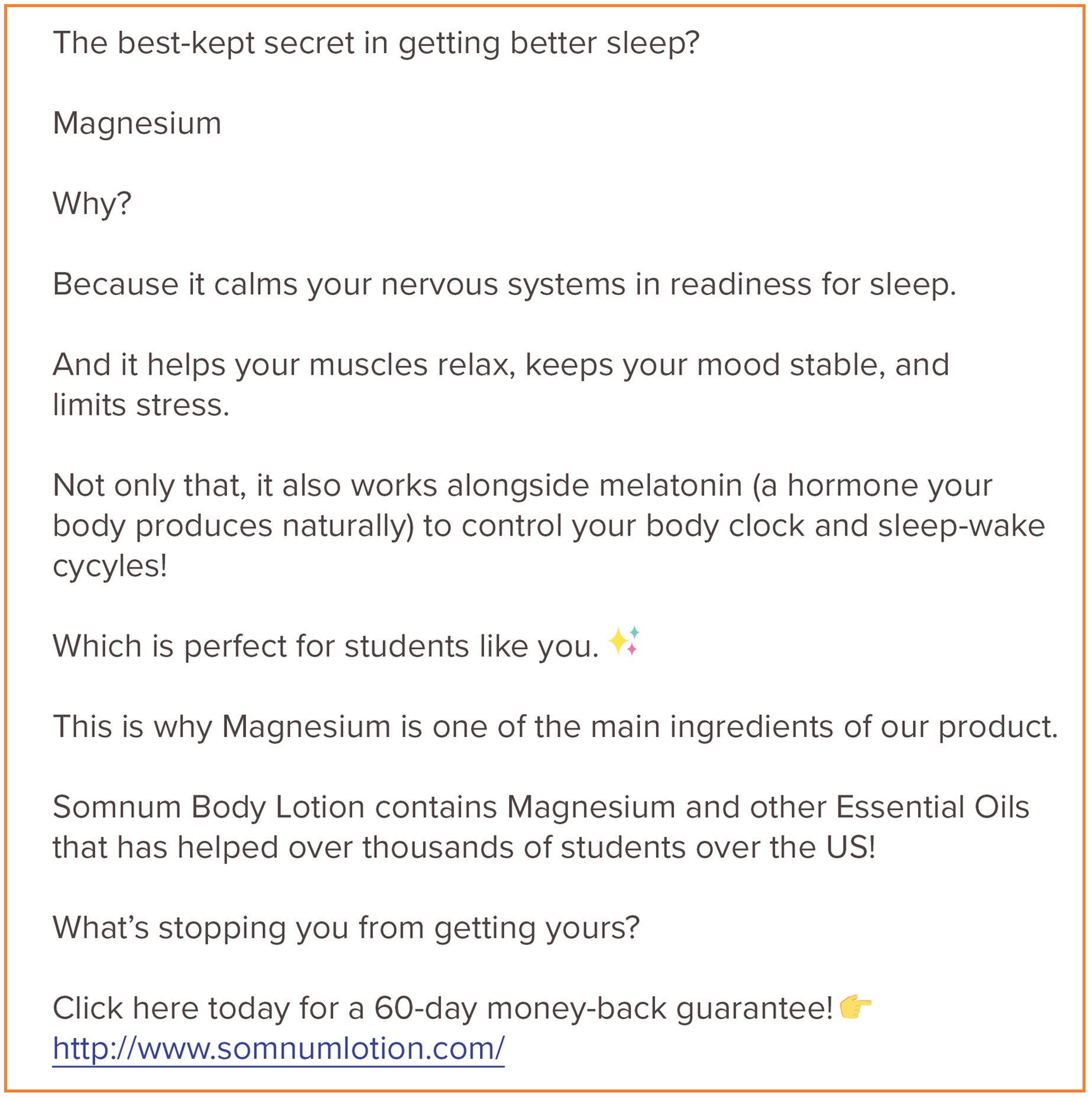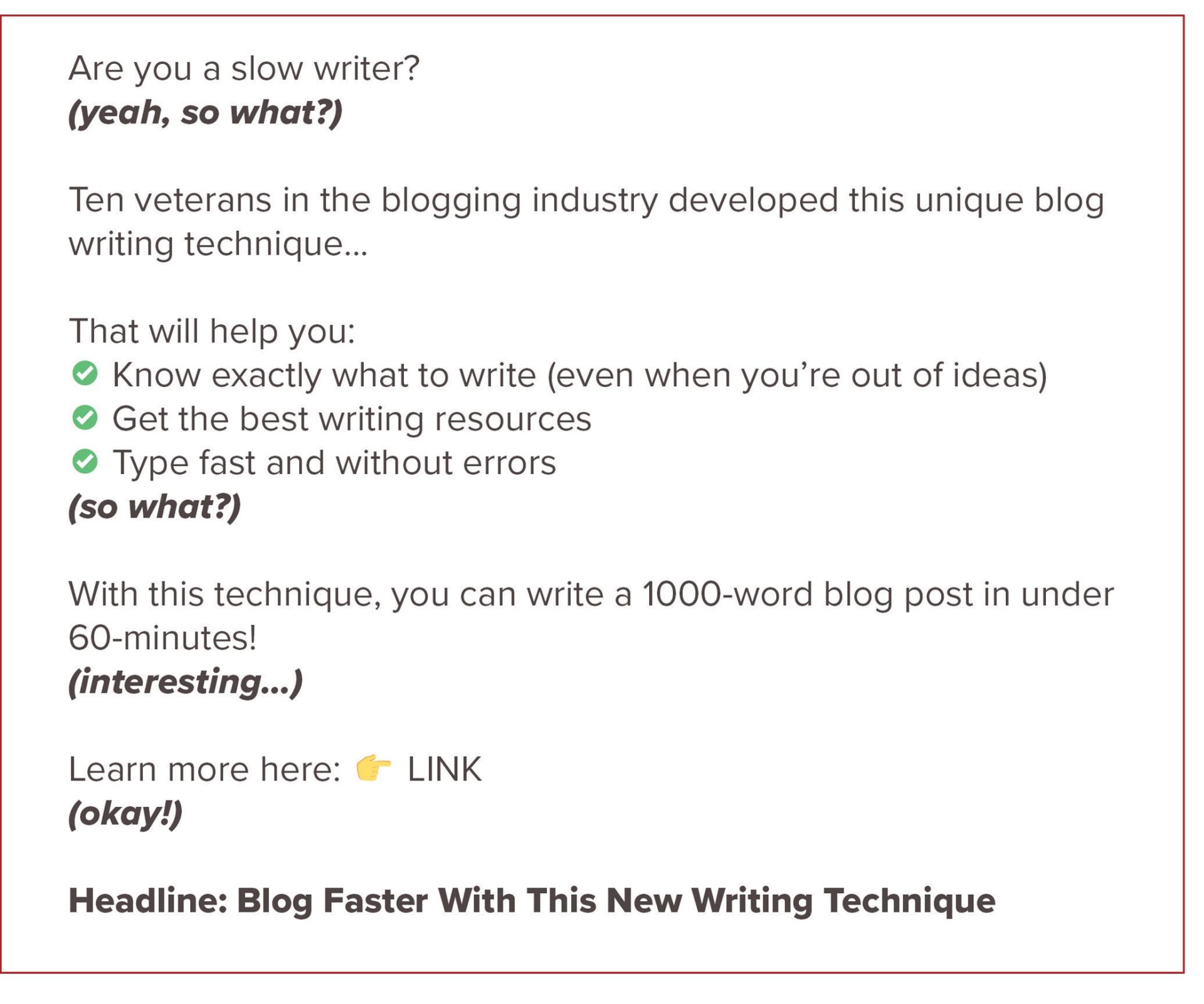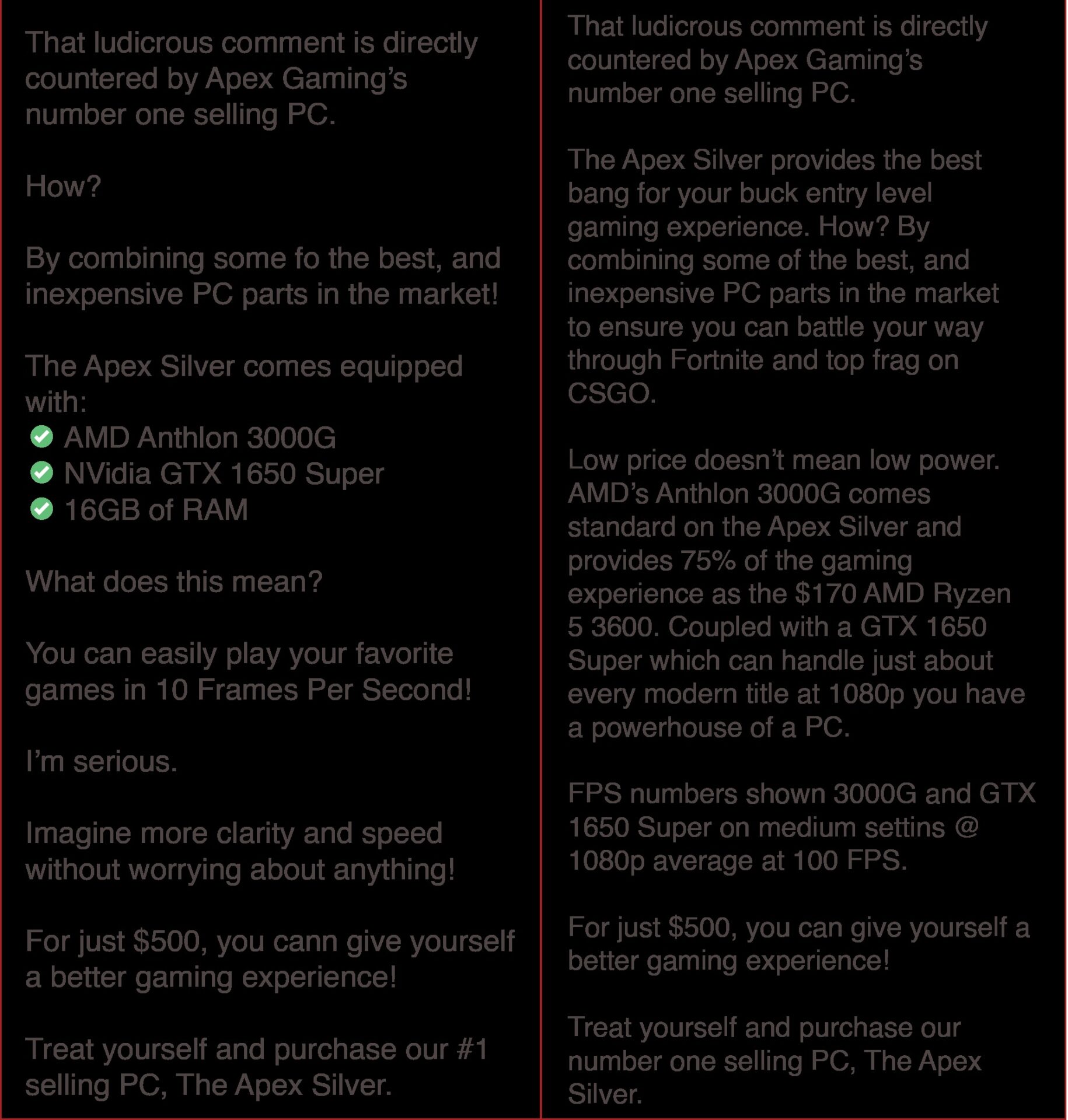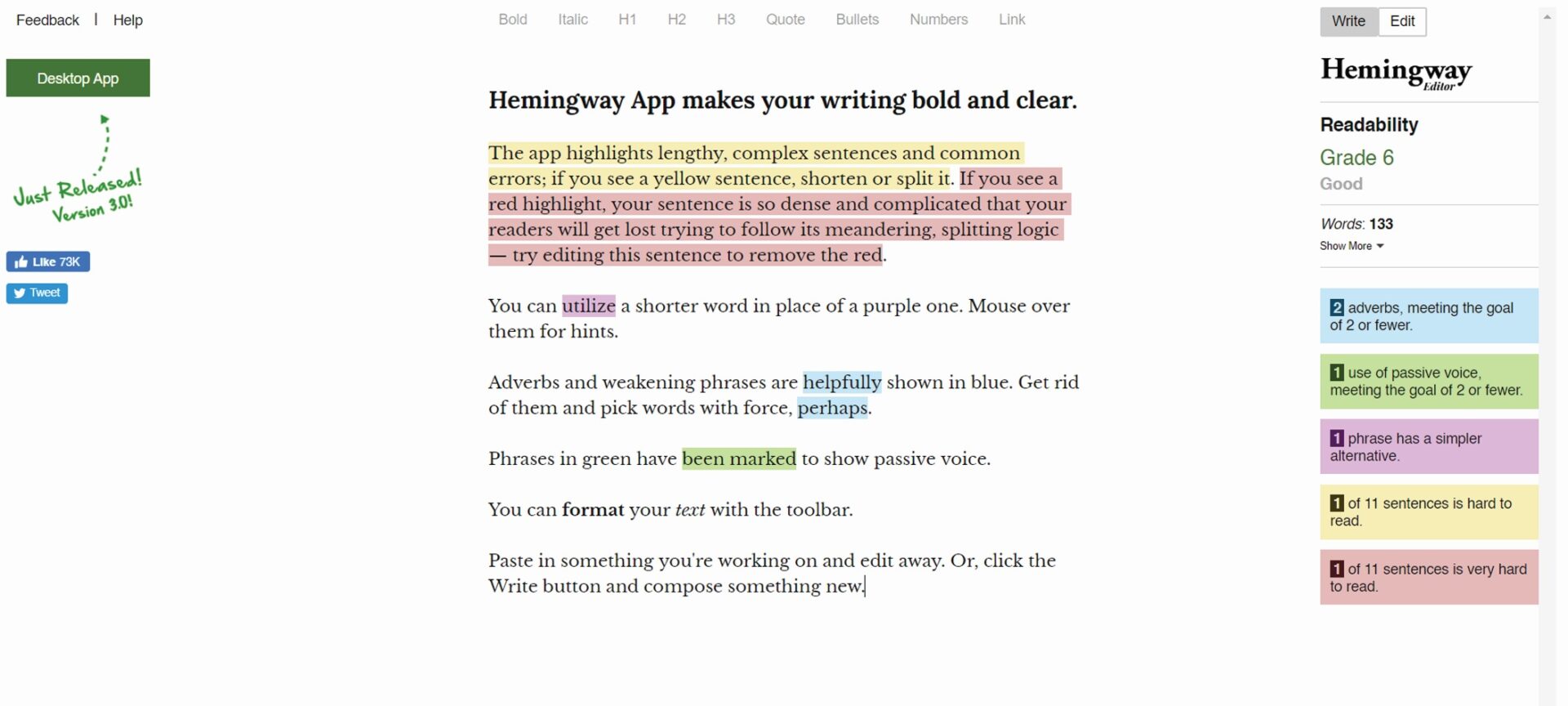These techniques are simple (yet powerful) which is why most people tend to overlook them. so Writing High Converting Sale Copy is necessory skill for anybody
But always keep them in mind so that you can write copy that will resonate with your target market and convert them from a stranger to a loyal customer.
Here’s a list of techniques that you can use to write copy that converts.
1. Use Your Market’s Language
Your market has their own language. And it’s your job to know and understand what it is.
Because here’s what’ll happen when you use your market’s language… you’ll easily:
- Capture their attention
- Create a bond/connection
- Know them better than they know themselves
By understanding their language and incorporating it in your copy, you will massively improve your conversion rate. So make sure you use the words and phrases your targe audiences use, not the ones YOU use.
How do you do that?
By stalking them and knowing what it’s like to be in their shoes. This is how you get into your customer’s minds.
2. Focus On Your Potential Customers
Always remember that you are writing for your reader, not for yourself.
People won’t care about what you have to say if you focus too much on your offer and its “great” features. They want to know what’s in it for them. So what can your offer do for them? And how can it help them achieve their goal?
If you can incorporate the answers to this question into your copy, your readers will care more about what you have to say. So don’t focus on the “we” and focus more on the “for you”.
For example:
Instead of focusing on the product’s features, this copy emphasizes what the product does for the user which, in this case, relieves the body’s joint and ligament pain.
3. Features + Benefits
While you may be an expert of the benefits of your offer, your target audience is not. It’s your job to educate them about what they can benefit from getting your offer.
You can do this by pairing your features with a benefit.
For example:
It can be reassuring for the reader to know that your product offers a solution to their problems. This is why it’s important to provide features and benefits in a clear and concise manner.
In this case, the feature is that your product is organic. It contains oat milk, lavender and essential oils… which then reinforces your claim/benefit: “A natural way to combat pain, stress, and anxiety.”
Another example:
Let’s say you’re selling a cell phone. Are you going to sell it by telling people about how much mAh (Milliamp Hours) your phone has?
Of course not.
Because they don’t care about mAh. Not one bit. They probably don’t even know what mAh is. What do they care about? What having high “mAh” ratings can do for them — the benefit.
Makes sense so far? Good.
4. Specificity Is Key
You know what they say: “If you’re selling to everyone, you’re selling to no one.” So be specific with your copy. It’s way more effective than writing generally.
Take a look at these 2 headlines:
- How to Get 3,737 Twitter Followers In One Day
- How to Get Over 3,700 Twitter Followers In Less Than A Week
Which of the two works better? The first one. We didn’t even have to think about it. Why is that?
When you say something specific, it sounds believable. Your readers will think that what you are saying is real and authentic. When you say something general, it sounds dishonest. So they’ll be skeptical about it.
Here are some examples:
- Don’t say, “I will triple your sales.” That’s very unlikely. Say, “I helped Peter increase his revenue by 337%” instead.
- Don’t say, “Our support team is very quick.” Say,”We’ll get you an answer within 24 hours.”
- Don’t say, “I made over $1000.” Say, “I made $1325.” Sounds more believable, doesn’t it?
Remember: It’s the specificity that gets more attention and conversions.
5. Write Conversationally
Writing copy is different from writing a term paper or a college essay. Remember your customer avatar and write like you are talking to that person. Write naturally.
Here’s a great, yet simple, technique:
Imagine that you’re talking to a friend when you’re writing copy. The sales-y tone is a thing of the past and is a customer-repellent.
You want your readers to know that you’re just another human being talking about this cool, new product or service.
Take this email copy, for example:
6. Don’t Make False Claims
When you’re writing copy, you’re not just persuading a potential customer to buy your product or avail of your service.
You’re building a foundation of trust. If you make false claims about your offer, they’re going to find out sooner or later that they’re fake.
One bad review can spread like wildfire and burn your business down to the ground. Always remember to make sure your claims are honest and true.
7. Target Their Emotions
Another trick to writing effective copy is targeting the reader’s emotions.
For example:
You’re talking to a friend who is scared about the amount of hair she’s losing due to hair fall. She’s frustrated because she’s tried everything and she’s skeptical about other shampoos.
But you talk her into getting a shampoo that helps with hair fall so she can finally relax and stop worrying.
See what happened?
I pointed out the different emotions that your “friend” was feeling and the possible emotions that she can feel when she buys your product.
“But how will I know what my target market is feeling?”
This is where your market research comes in handy. You already have the data on your market’s hopes, fears, pains, goals, etc., so it should be easy for you to find the emotions that your readers can resonate with.
Important: A person’s emotion is more closely tied to decision-making. People buy things because they are driven by their emotions.
Here’s another example:
Feeling lost, anxious and unmotivated are powerful emotions that almost everyone in this market knows.
Letting your readers feel those powerful emotions and then presenting your offer as something that can resolve these emotions can be a huge factor in their decision-making.
8. Focus On One
Overwhelmed about all the information that you gathered in your research? Don’t worry.
You don’t have to shove everything in one copy. Your readers will only end up getting confused about what you’re talking about.
When writing copy, just focus on one.
- 1 Cutting-edge Idea
- 1 Promise
- 1 Offer
- 1 Person
Important: There are a hundred ways to kill a cat. You only need to show your readers one.
9. The “Slippery Slide”
The term “slippery slide” was coined by the legendary copywriter Joseph Sugarman. He refers it to writing copy that’s so compelling to readers couldn’t stop reading sentence after sentence until they reach the end.
Think of it like you’re at the playground. You see a gigantic slide… just waiting for you to slide on. So you get on the slide. And you go down without a hitch.
You feel happy, right?
That’s because everything was smooth and easy. (Like how you read this analogy.)
And it’s the same with your copy. The “slippery slide” starts with an attention-grabbing hook. Once you’ve gotten their attention, the purpose of the second line is to make sure they read the third line.
This goes on until they reach the end of the copy. There are three ways to do this:
1. First – plant seeds of curiosity in your copy. If you give everything away in your hook, the reader isn’t going to want to read until the end. Use connecting phrases that link your current line with the next one.
These include:
- How?
- There’s more…
- Let me explain.
2. Second – use short sentences. Don’t say everything that you need to say in one sentence or else your reader will have a hard time reading it and they won’t want to continue reading your copy.
Break them up into small pieces of information. That way, your copy will be easier to read and it won’t feel overwhelming when they read it.
Important: People want things quick and easy. So apply that in your copy.
3. Third – be relatable. Include sentences and phrases that will get the reader to nod their heads and agree with you. Making a series of statements that the reader agrees creates a powerful ad copy.
Here’s an example using a slippery slope:
10. The “So What?” Method
If you struggle to write copy that flows from one idea to the next. Use the “So What?” method. This method helps create a structure that connects all your sentences until the end.
It’s basically asking “So what?” after every sentence to help expound on that idea and make it clearer. Not only that, this also helps translate features into benefits.
Just like the slipper slide, this method will help you write copy that makes your audience read your copy from the hook down to the call-to-action.
To show you how this works, here’s an example:
11. The “5 Whys” Technique
This technique was made as a way to analyze problems, but you can also use this to build upon your idea and get to the core of your target audience’s problem.
You can also use this technique to find the core benefit of your product/service. How does this work? It’s pretty simple.
All you have to do is ask yourself “WHY?” 5 times.
Here’s an example:
- Problem: I’m limiting my calorie intake.
- Why? I’m not as healthy as I want to be.
- Why? My weight hasn’t decreased.
- Why? I keep eating junk food.
- Why? I’m always hungry after working out.
- Why? Healthy food doesn’t fill me up that much.
Therefore, healthy food that fills you up can be a core benefit of your product or service.
12. Use Simple Language And Short Paragraphs
Another important reminder is to choose words that your audience can understand.
When your copy gets too complicated or uses high-falutin words, you might lose your audience – like how I may have lost you on “high-falutin.”
And as mentioned earlier in the “slippery slope”, use short paragraphs so it’s easier for your audience to read the entire copy.
Take a look at this example:
Which one do you think is easier to read?
As complicated as computers can be, we can agree that Copy #1 (the simpler copy) conveys all the necessary information and is easier to read.
In this market, people know exactly what they want.
Although it’s important to specify things such as the computer parts themselves, the writer shouldn’t get too carried away with all the details.
13. Use Emojis 🤗
Why emojis? Because they work.
And because not all Facebook ad copy has to look so formal. Using emojis is one way of grabbing your target audience’s attention 🛎️ .
See what happened above? Using an emoji adds a splash of color to a boring block of text. This is the reason why advertisers and copywriters use emojis in their ads.
For example, people normally use bullets when writing a list.
Why not use emojis instead?
You can also tie emojis with your brand. They give your brand personality and identity. Whether you’re fun and youthful or cool and witty, emojis can help humanize your brand’s identity.
But take note, it depends on the brand you’re writing for.
14. Proofread your copy
Remember, writing copy isn’t just a one-time thing. Even the “best” copy can still be improved.
So once you’ve written an initial draft, you need to let someone else proofread your copy – whether it’s another writer or a professional copy editor.
Why?
Because you’re already familiar with your copy, so it’s almost impossible for you to notice any typos or grammatical errors. You need a fresh set of eyes to read through your copy and find ways to make it better.
If no one can proofread your copy for you, use these online tools to help you out instead – Grammarly, ProWritingAid, and HemingwayApp.
For example:
15. Us vs. Them
Henri Tajfel introduced the concept of “Us vs. Them” in the “Social Identity Theory.” To put this theory in simpler terms, people’s concept of “self” comes from a group that they belong to.
Once they identify themselves as a part of a group, they gain a sense of self-esteem. But in order to maintain that self-esteem, they tend to compare themselves (us) to another group (them).
Thus creating the concept of “Us vs. Them.”
How do you apply this concept into ad copy? The answer is simple. All you have to do is create an illusion that you’re “fighting against a common enemy” – the other group.
And you make it clear that your mission/purpose is better than that of other brands. They will be led to believe that if they do “join the cause” and buy your product or service, they will be part of the superior group.
For example:
In this example, the reader is currently part of “Them.” And we are offering him a way to be a part of “Us” through our cologne.
This example implies that “fraganza men” are best when it comes to winning over a woman. This makes the reader want to be a “fraganza man” as well. Because they’re led to believe that by becoming one of “us,” they will instantly become great at winning over a woman.
16. Use Reviews/Testimonials For Credibility
If you claim to be the best, don’t say it yourself. Let your customers do it for you through reviews/testimonials.
Let them share:
- What transformation they’ve gone through because of your product.
- Why they think others should buy your product.
- How much they love your product.
This is one of the best ways to establish your credibility. That’s why it’s important to always interact with your customers. Not only do you get new ideas from them, but you can also get these sweet reviews/testimonials!
Remember: “Word of mouth is the best form of advertising.”
17. Read Out Loud
This technique isn’t something revolutionary, but it will change the way you write copy.
Why?
Because it’s effective in identifying the errors that your eyes skimmed right over. By reading your copy out loud, you make the errors obvious.
Not only that… it’s also one of the best ways to make your copy more conversational as well. This will come in handy when you’re editing your copy by yourself.
Here are some benefits of reading out loud… Read Out Loud
You’ll find out:
- If you missed anything or if you mistyped any words.
- Which lines/ideas don’t make sense or connect well with each other.
- If the tone of your copy is too sales-y or if you’re just being conversational
Your copy might be grammatically perfect, but if you trip over it while reading out loud, it can almost certainly be better.
Check more interesting Articles:
How to write Copywriting – From Beginner to Expert
10 Best Practices for Website Copywriting
Importance of a Headline in Copywriting
8 Tips for Writing a Copy That Make People to Take Action
Conclusion
And there you have it! , 17 powerful techniques that you can use to make your copy strong enough to convert a stranger to a loyal customer.
Consider Following a Course ?
With Lifetime Access ?
We have been the number 1# platform for delivering most demanding course. Becoming Lifetime Member , You will receive all the Premium content For FREE

Consider Following a Course ? With Lifetime Access ?
We have been the number 1# platform for delivering most demanding course. Becoming Lifetime Member , You will receive all the Premium content For FREE


